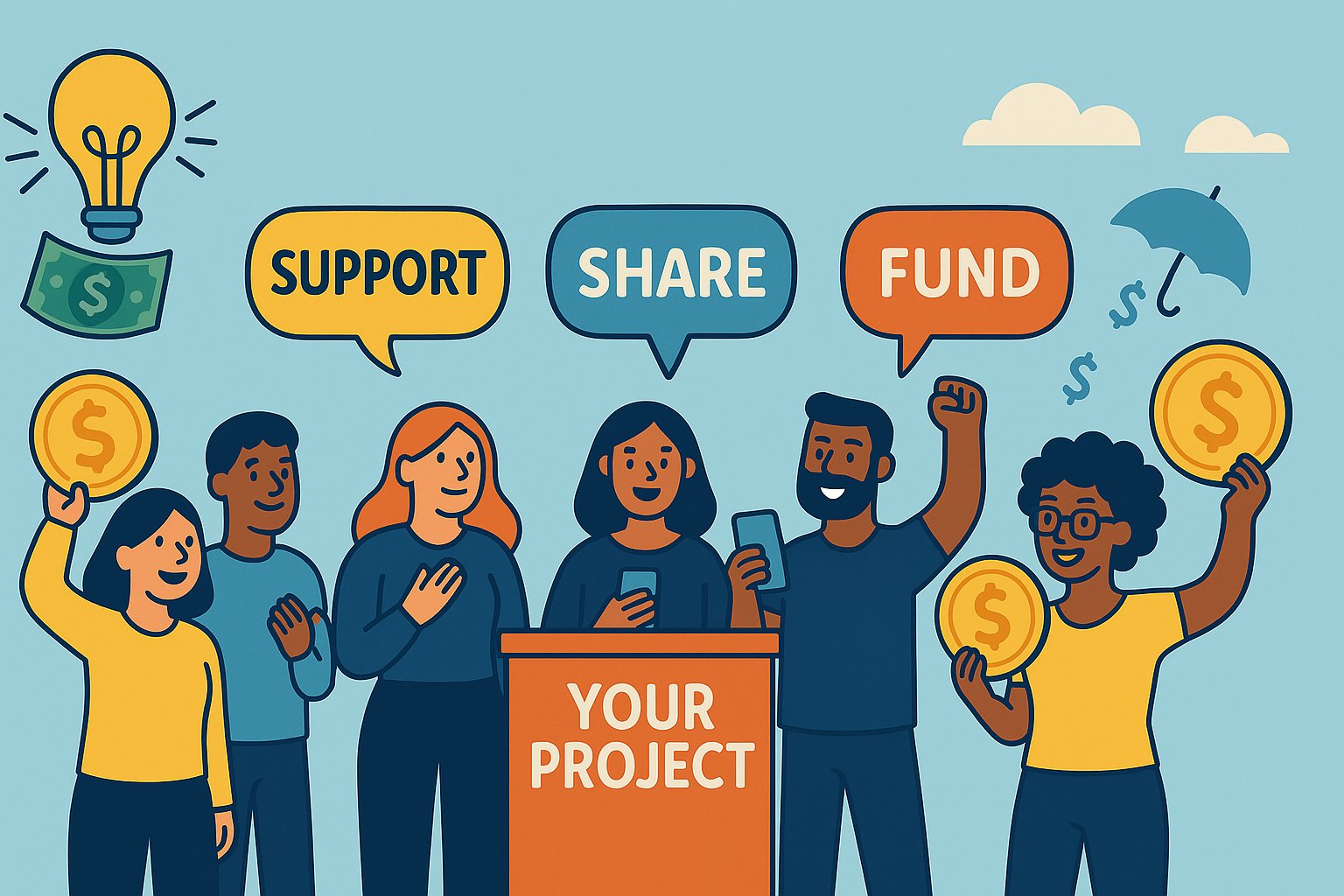Introduction to Crowdfunding
The rise of crowdfunding has fundamentally altered the landscape of financing, empowering creators, entrepreneurs, and community leaders to secure funding directly from the public. Unlike traditional financing routes—where banks, venture capitalists, or grant bodies serve as gatekeepers—crowdfunding opens the door to anyone with a compelling idea and a plan. By soliciting small contributions from a large audience, campaigns can rally support, validate demand, and access the capital needed to bring projects to life. However, this innovative model is not without its challenges. As with any emerging funding mechanism, it offers both significant advantages and inherent drawbacks. Understanding the pros and cons of crowdfunding explained is essential for creators who seek to harness its potential while navigating its pitfalls.
Crowdfunding’s appeal lies in its ability to democratize access to capital. By breaking large funding goals into manageable individual contributions, it lowers entry barriers for early-stage ventures and creative projects. At the same time, the collaborative nature of crowdfunding fosters communities of passionate backers who become invested stakeholders. Yet, creators must confront issues such as fulfillment logistics, platform fees, and regulatory hurdles. Addressing these challenges proactively is key to running successful campaigns and preserving long-term credibility. In the sections that follow, we’ll delve into the core advantages and disadvantages of crowdfunding, offering insights and best practices to help campaign leaders make informed decisions.
Understanding the Crowdfunding Landscape
Crowdfunding encompasses a diverse ecosystem of platforms and funding models, each tailored to different objectives and risk profiles. Reward-based platforms like Kickstarter and Indiegogo invite backers to pledge funds in exchange for early access, limited-edition products, or exclusive experiences. Donation-based platforms such as GoFundMe cater to charitable causes, enabling contributors to support humanitarian efforts or personal hardships without expecting tangible returns. Equity crowdfunding sites like SeedInvest and Republic open doors for investors to acquire ownership stakes in startups, while peer-to-peer lending platforms facilitate debt-based contributions with fixed interest rates.
Choosing the right model hinges on campaign goals, regulatory considerations, and audience expectations. Reward-based campaigns thrive on storytelling and compelling perks, whereas equity campaigns demand extensive financial disclosures and compliance with securities regulations. Donation-based initiatives rely on emotional resonance and social impact narratives. Navigating this spectrum requires creators to align their objectives with platform features, audience demographics, and legal obligations. A clear understanding of these foundational elements sets the stage for evaluating the specific pros and cons of crowdfunding explained in later sections.
Advantage: Democratized Access to Capital
One of crowdfunding’s most celebrated benefits is its democratization of funding opportunities. Historically, early-stage innovators depended on a small pool of investors or institutional loans, often facing stringent requirements and equity dilution. Crowdfunding disrupts this model by enabling individuals to contribute modest amounts—sometimes as low as five or ten dollars—toward a collective goal. This opens doors for niche projects, social enterprises, and creative endeavors that may not align with traditional investor mandates.
Democratized funding also levels the playing field for underrepresented founders. Entrepreneurs from diverse backgrounds often struggle to access venture capital networks; crowdfunding empowers them to showcase ideas directly to potential supporters. The ability to validate concepts through aggregated pledges helps to overcome biases and build credibility based on public interest rather than existing industry connections. As a result, crowdfunding has become a vital tool for fostering inclusive innovation and broadening the spectrum of funded projects.
Advantage: Early Market Validation and Feedback
Beyond capital acquisition, crowdfunding serves as a live market test. Campaigns provide real-time indicators of consumer interest, revealing which features resonate and which messaging strikes the strongest chord. A rapid influx of early backers signals product-market fit, empowering creators to refine prototypes, adjust reward structures, or pivot strategies before committing to large-scale production.
Feedback channels embedded within crowdfunding platforms facilitate direct dialogue between creators and supporters. Comments, surveys, and update threads reveal backer preferences and pain points, guiding iterative improvements. This dynamic feedback loop reduces the uncertainty inherent in new product launches and can significantly lower the risk of investing in untested markets. By interpreting campaign engagement metrics—such as pledge velocity, referral sources, and backer demographics—creators glean actionable insights that inform marketing plans and operational decisions.
Advantage: Community Engagement and Marketing
Crowdfunding campaigns function not only as fundraising vehicles but also as powerful marketing catalysts. Each backer becomes a brand ambassador, sharing campaigns across social media, blogs, and word-of-mouth networks. This organic amplification often eclipses the reach and cost-effectiveness of traditional advertising. Viral momentum can emerge when backers feel personally invested in a project’s success, leading to exponential growth in visibility.
Moreover, creators can leverage campaign updates to deepen engagement. Behind-the-scenes videos, team interviews, and milestone celebrations foster a sense of belonging among supporters. This community-driven approach extends beyond the funding window; successful campaigns frequently convert backers into loyal customers, newsletter subscribers, or repeat investors. Crowdfunding thus lays the groundwork for long-term brand advocacy, establishing a dedicated audience that can be mobilized for future launches, upsells, or affiliate programs.
Drawback: All-or-Nothing Risks and Funding Shortfalls
While the all-or-nothing model mitigates backer risk by only collecting funds if the campaign meets its goal, it introduces the specter of total failure. Creators who set overly ambitious targets may fall short and receive no funding, rendering extensive preparatory work futile. Conversely, campaigns that opt for flexible funding—keeping whatever amount is pledged—face the risk of undercapitalization. Without sufficient funds, creators might struggle to fulfill rewards, cover production costs, or meet quality standards.
Choosing the right funding threshold demands meticulous budgeting. Creators must account for manufacturing expenses, platform fees, shipping costs, taxes, and contingency buffers. Miscalculations can lead to situations where even a fully funded campaign cannot deliver on promises, jeopardizing reputation and backer trust. Understanding these financial dynamics and conducting thorough cost analyses is critical to avoiding the pitfall of funding shortfalls.
Drawback: Production and Fulfillment Challenges
Transforming pledges into tangible rewards presents a host of logistical hurdles. Sourcing components, managing supplier relationships, and coordinating assembly can overwhelm small teams without established supply chains. Manufacturing delays—stemming from tooling setup, quality inspections, or customs hold-ups—often cascade into missed delivery deadlines. When backers experience prolonged waits or receive flawed products, their disappointment can reverberate across review sites and social media channels.
Shipping complexity adds further strain. International shipping regulations, customs duties, and varying courier reliability introduce unpredictable variables. Fulfilling individual rewards requires meticulous tracking, accurate address management, and responsive customer service. For creators who underestimate these operational demands, the aftermath can include increased costs, eroded margins, and strained backer relationships. Effective risk mitigation strategies—such as partnering with experienced fulfillment centers or offering digital rewards—can alleviate some of these challenges.
Drawback: Fees, Costs, and Financial Transparency
Crowdfunding platforms facilitate transactions and offer promotional tools, but they levy fees that can significantly erode net funding. Standard structures include an 8–10% platform fee combined with payment processing charges of approximately 3–5%. When creators factor in shipping expenses, taxes, and potential customs fees, the total cost of fulfilling rewards can climb steeply. Transparent budget breakdowns are essential to ensure that net proceeds suffice to cover all obligations without compromising quality.
Financial transparency extends to currency fluctuations and refund policies. International campaigns must navigate exchange rate volatility, which can affect backer contributions and operational expenses. Furthermore, platforms maintain specific refund guidelines that can leave creators liable for chargebacks if campaigns fall through or encounter legal disputes. Comprehensive financial planning and the inclusion of contingency reserves are indispensable for maintaining fiscal health and preserving backer confidence.
Drawback: Regulatory and Legal Complexities
Equity and debt crowdfunding campaigns operate within stringent regulatory frameworks designed to protect investors. Securities laws vary by jurisdiction, dictating disclosure requirements, investor accreditation criteria, and funding limits. Noncompliance can trigger legal repercussions, including fines, forced refunds, or litigation. Even reward-based campaigns must adhere to intellectual property laws, consumer protection regulations, and tax reporting obligations.
Navigating this regulatory terrain often necessitates legal counsel and accounting expertise—services that add to upfront costs. Campaign creators must draft terms and conditions, privacy policies, and investor agreements that comply with local and international statutes. Transparency regarding intellectual property ownership, potential risks, and refund mechanisms is vital. A misstep in legal compliance can stall campaigns or expose creators to reputational harm and financial penalties.
Strategies for Maximizing Benefits and Mitigating Risks
Successful crowdfunding hinges on strategic planning and execution. Campaign creators should invest time in pre-launch preparations, including audience building through email lists, social media engagement, and teaser content. Crafting a compelling narrative with high-quality visuals and well-produced videos enhances credibility and emotional resonance. Early bird incentives and stretch goals can drive initial momentum, while partner collaborations—such as influencer endorsements and press outreach—expand visibility.
Financial rigor is equally important. Detailed budget models must account for every cost component, from platform fees to shipping. Incorporating contingency buffers of at least 10–15% helps absorb unexpected expenses. Creators should consider fulfillment partners or print-on-demand services to streamline operations and reduce overhead. Legal compliance requires drafting comprehensive disclosure documents and seeking professional guidance when navigating securities regulations.
Maintaining transparent communication throughout the campaign and beyond fosters trust. Regular updates—even those reporting setbacks—demonstrate accountability and respect for backers’ investments. Post-campaign surveys and feedback loops can inform product iterations and future launches. By balancing creative vision with operational discipline, creators can amplify the pros of crowdfunding while keeping cons in check.
Crowdfunding explained reveals a powerful model that democratizes access to capital, validates market demand, and fosters vibrant communities of supporters. Yet it is not a panacea. Campaign creators must contend with all-or-nothing funding risks, production and fulfillment complexities, platform fees, and regulatory hurdles. By understanding these pros and cons of crowdfunding explained, innovators can develop robust strategies that maximize benefits and mitigate pitfalls.
Looking ahead, technological advancements and evolving regulations will continue to shape the crowdfunding ecosystem. Blockchain-based platforms promise greater transparency and fractionalized ownership, while AI-driven analytics will optimize campaign performance. As traditional financial institutions integrate crowdfunding mechanisms into their services, the lines between mainstream finance and collective funding will blur further. For creators and backers alike, mastering the nuances of crowdfunding today lays the groundwork for participating in an increasingly collaborative and inclusive financial future.




